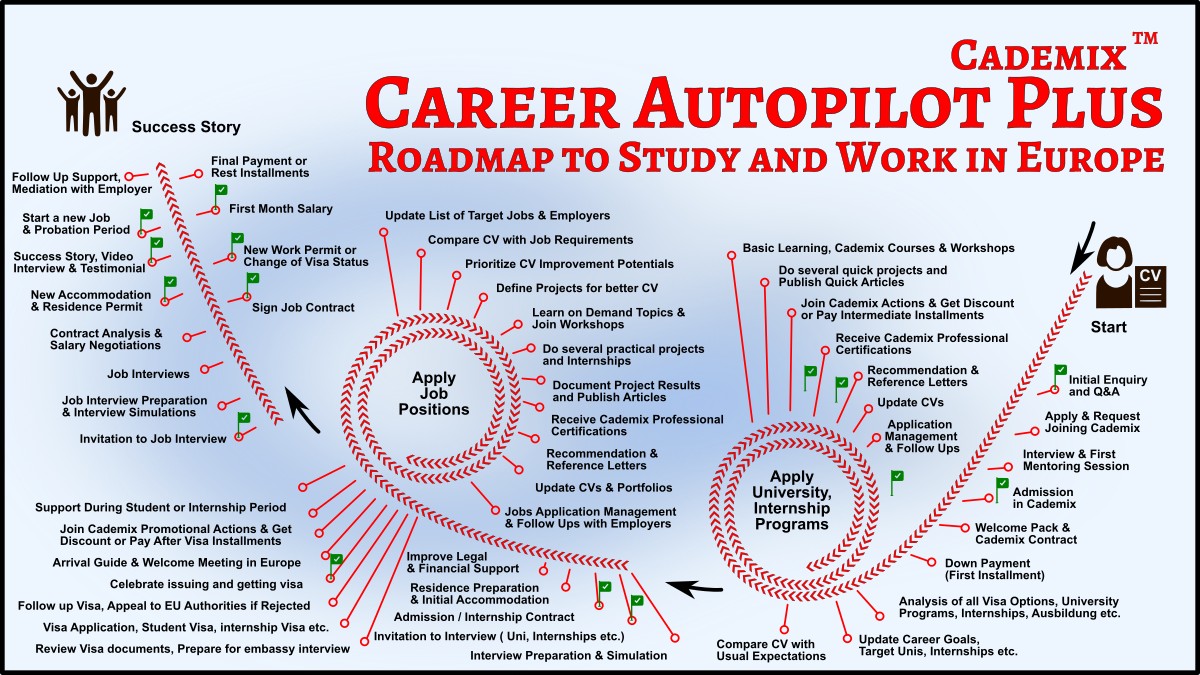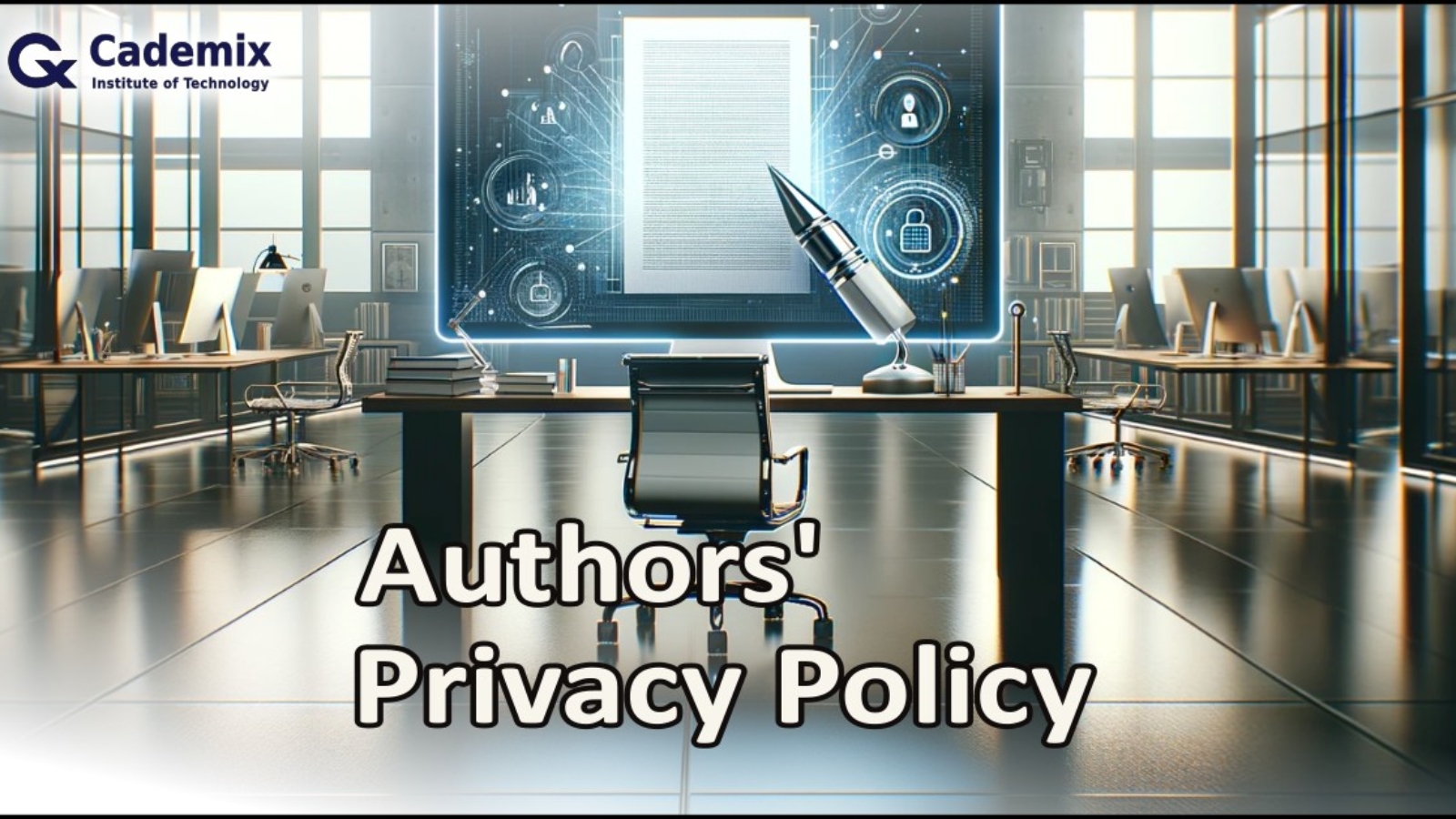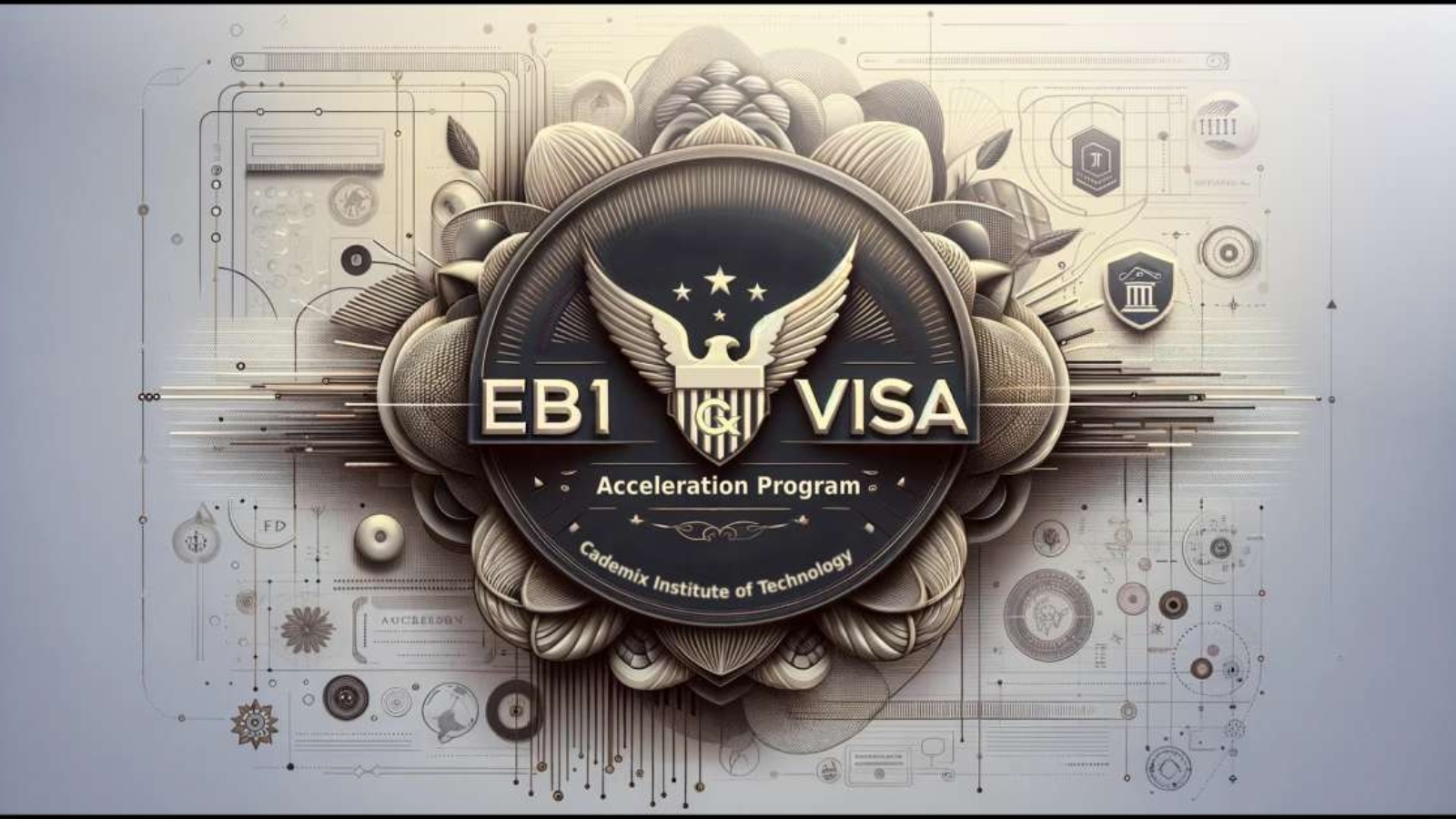Estimated Reading Time: 5 minutesEmpower your career trajectory with the ‘Application History: A Career Acceleration Toolkit’, a strategic guide to streamlining and customizing your job and academic applications for maximum impact and success.
Optometrist Job Positions in Europe
Estimated Reading Time: 3 minutesOptometry and optometrist jobs are in high demand in Europe, particularly in countries such as Austria and Germany. Eye hospitals and optical shops are struggling to find enough qualified candidates for these positions. Technical skills, such as having a university degree and work experience, are important for these jobs, but soft skills like communication and cultural understanding can also be a challenge for international applicants. Career acceleration programs, like Cademix Career Autopilot, can help job seekers prepare for interviews and improve their technical and non-technical skills, making them more employable.
The Role of Creativity in Event Planning: Think Outside the Box
Creativity plays a pivotal role in event management, serving as the key to designing impactful and memorable experiences that resonate with attendees. This article explores how innovative thinking in event planning can elevate events, ensuring they stand out in a competitive landscape. By leveraging the latest event technology tools, integrating experiential marketing strategies, and staying ahead of event trends for 2024, planners can push boundaries and create unique, engaging events. Additionally, we provide practical tips for balancing creativity with budget management, effective communication, and post-event evaluation to ensure success in every aspect of event management.
By Samareh Ghaem Maghami, Associate Consultant and Project at Cademix Institute of Technology
Introduction
In the dynamic world of event management, creativity is not just a desirable trait—it’s a necessity. As the industry evolves, standing out in a crowded market requires more than just logistical precision; it demands innovative thinking that captures the imagination and leaves a lasting impression on attendees. Event planning today goes beyond mere organization; it’s about crafting experiences that resonate, inspire, and push the boundaries of what’s possible. Whether you’re orchestrating a corporate conference, a grand wedding, or an international expo, incorporating creativity into your event strategy can be the difference between an ordinary gathering and an extraordinary experience.
In this article, we delve into the critical role that creativity plays in event management, offering actionable insights on how to generate innovative ideas that not only meet but exceed expectations. From leveraging cutting-edge event technology tools to embracing experiential marketing and staying ahead of event trends, we will explore how to infuse creativity into every aspect of your event planning process.

The Importance of Creativity in Event Planning
In the competitive landscape of event management, creativity is the cornerstone that can set your event apart from the rest. But what does creativity in event planning truly mean? At its core, it’s about approaching each event with a fresh perspective, using innovative ideas to craft unique and engaging experiences that captivate your audience. In a world where attendees are constantly bombarded with content and experiences, the ability to think outside the box is what makes an event memorable.
Creativity impacts every facet of an event—from the design and atmosphere to the way attendees interact with the content. A creatively planned event not only meets logistical goals but also delivers an emotional and intellectual experience that resonates with participants long after the event concludes. By integrating creative elements into event marketing strategies, you can significantly enhance engagement, ensuring your event not only attracts but also retains the attention of your target audience.
Moreover, staying ahead of event trends in 2024 requires a creative mindset. The event industry is rapidly evolving, with new technologies and trends emerging constantly. Planners who can anticipate and incorporate these trends creatively will be better positioned to deliver cutting-edge events that stand out in the marketplace. Whether through the use of innovative event technology tools or by embracing experiential marketing tactics, creativity ensures that your event remains relevant, dynamic, and impactful.
In essence, creativity is not just a component of successful event management—it’s the driving force behind it. By fostering a culture of creativity, you can transform ordinary events into extraordinary experiences, leaving a lasting impression on your attendees and setting a new standard for the industry.
Strategies to Foster Creativity in Event Planning
To excel in event management, it’s essential to cultivate creativity at every stage of the planning process. Implementing effective strategies to spark innovative ideas can lead to more engaging and memorable events. Here are some proven methods to enhance creativity in event planning:
1. Brainstorming Techniques
Creativity often begins with effective brainstorming. Techniques like mind mapping, brainwriting, and collaborative workshops can help your team generate a wide range of ideas. Encouraging an open and non-judgmental environment allows for the free flow of thoughts, leading to unique concepts that might not emerge in more structured settings. This approach is particularly useful in project management and logistics planning, where new and creative solutions can significantly enhance the event’s overall impact.
2. Leveraging Event Technology Tools
Incorporating the latest event technology tools can be a game-changer in fostering creativity. Tools such as virtual reality (VR), augmented reality (AR), and AI-driven personalization can transform traditional event formats into immersive experiences. These technologies enable event planners to create interactive environments that captivate attendees and offer new ways to engage with the event content. Staying up-to-date with event trends 2024 ensures you’re utilizing the most cutting-edge tools available, keeping your events innovative and ahead of the curve.
3. Incorporating Experiential Marketing
Experiential marketing is a powerful strategy that allows attendees to interact with a brand or message in a meaningful way. By incorporating creative, experience-driven elements into your events, you can forge a deeper connection with your audience. Whether through hands-on activities, live demonstrations, or immersive storytelling, experiential marketing transforms passive attendees into active participants, making the event more memorable and impactful.
4. Embracing Hybrid Events
As the demand for hybrid events continues to grow, creativity becomes even more critical. Blending physical and digital components requires innovative approaches to ensure a seamless and engaging experience for both in-person and virtual attendees. By creatively integrating technology, content, and interaction, hybrid events can offer the best of both worlds, expanding your reach while maintaining a high level of engagement.
Incorporating these strategies into your event planning process not only boosts creativity but also enhances the overall effectiveness of your events. By continuously exploring new ideas and technologies, you can deliver innovative experiences that leave a lasting impression on your audience, setting a new standard in event management.

Overcoming Challenges in Creative Event Planning
While creativity is essential in event management, it often comes with its own set of challenges. Balancing innovative ideas with practical constraints like budgets, stakeholder expectations, and logistical hurdles can be daunting. However, with the right strategies, these challenges can be effectively managed, allowing you to bring your creative vision to life.
1. Balancing Creativity with Budget Management
One of the most common challenges in creative event planning is staying within budget while still delivering a unique and memorable experience. Budget management doesn’t have to stifle creativity; instead, it can drive innovation. By prioritizing key elements that will have the most significant impact, and being resourceful with available funds, you can maximize the budget without compromising on creativity. Consider utilizing cost-effective event technology tools that offer high engagement at a lower cost, or negotiating with vendors to find creative solutions that align with your financial constraints.
2. Vendor Negotiation and Collaboration
Effective vendor negotiation is crucial when bringing creative ideas to life. Establishing strong relationships with vendors and collaborators can open the door to flexible pricing, customized solutions, and innovative offerings that enhance your event. Communicate your creative vision clearly and work closely with vendors to explore possibilities that fit within your budget and logistical framework. By treating vendors as partners in the creative process, you can achieve more than what might initially seem possible.
3. Stakeholder Management
Managing stakeholder expectations while pursuing a creative vision can be a delicate balancing act. Stakeholder management involves ensuring that all parties involved—from clients to sponsors to team members—are aligned with the creative direction of the event. Clear and effective communication is key here. Regular updates, visual mockups, and detailed plans can help stakeholders visualize the creative elements and understand how they contribute to the overall success of the event. By engaging stakeholders early in the process and incorporating their feedback, you can gain their support and minimize resistance to bold, creative ideas.
4. Navigating Logistical Challenges
Logistics are the backbone of any successful event, and creative ideas must be grounded in practical execution. Logistics planning requires a keen eye for detail, ensuring that every creative element is feasible within the event’s framework. This might involve rethinking venue layouts, considering alternative materials, or devising new methods for attendee interaction. Creativity in logistics isn’t about taking shortcuts but rather finding innovative ways to overcome obstacles and enhance the event experience without compromising on quality or safety.
By addressing these challenges head-on, you can create a solid foundation that supports and enhances creativity in event planning. Overcoming these hurdles not only allows you to deliver on your creative vision but also ensures that your event is executed seamlessly, leaving a lasting impression on attendees and stakeholders alike.
Case Studies of Successful Creative Events
Understanding how creativity has been successfully implemented in real-world scenarios can provide valuable insights for your own event management endeavors. Examining case studies of innovative events highlights the power of creativity in event planning and offers practical lessons that can be applied across various types of events.
1. Innovative Event Examples
One notable example is the annual South by Southwest (SXSW) festival, which has become a benchmark for creativity in event planning. By blending technology, music, film, and interactive media, SXSW consistently delivers an engaging, multi-sensory experience that keeps attendees coming back year after year. The event’s success lies in its ability to stay ahead of event trends and leverage the latest event technology tools to create immersive and interactive experiences. Whether it’s through virtual reality installations, AI-driven networking tools, or experiential marketing activations, SXSW demonstrates how creativity can elevate an event to iconic status.
Another example is the Google I/O conference, which showcases creativity in hybrid events. By combining in-person experiences with cutting-edge digital content, Google I/O effectively engages both physical and virtual audiences. The use of interactive live streams, virtual demos, and real-time Q&A sessions illustrates how creativity in event planning can overcome the limitations of a traditional format, making the event accessible and engaging for a global audience.
2. Lessons Learned from International Event Management
International event management adds another layer of complexity where creativity plays a crucial role. The World Economic Forum in Davos, Switzerland, is an excellent case of how creative event management can address the unique challenges of an international event. The event organizers creatively manage logistics, security, and communication for high-profile attendees from around the world. By incorporating cutting-edge technologies and innovative logistics solutions, they ensure smooth operations while also providing an environment conducive to high-level discussions and networking.
Additionally, the Cannes Film Festival stands as a prime example of how creativity in event marketing and experiential marketing can elevate an event’s prestige. From the glamorous red carpet to exclusive screenings and networking events, every aspect of Cannes is meticulously planned to create an unforgettable experience. The festival’s ability to blend culture, entertainment, and business has made it one of the most sought-after events globally, illustrating how creativity can enhance both the event’s appeal and its economic impact.
3. Practical Applications for Event Planners
These case studies underscore the importance of integrating creativity into all aspects of event management, from project management and logistics planning to stakeholder management and event marketing. Event planners can take inspiration from these examples to innovate within their own events, regardless of scale or budget. By staying informed about the latest event trends and technologies, and by learning from the successes of others, planners can push the boundaries of what’s possible, delivering events that are not only logistically sound but also creatively outstanding.
These real-world examples demonstrate that with the right combination of creativity and strategic planning, any event can be transformed into a memorable experience that resonates with attendees and sets new standards in the industry. Whether you’re managing a small local gathering or a large international conference, the lessons learned from these creative events can help guide your own event management journey, ensuring that your events are both innovative and successful.

Practical Tips for Event Planners
Successfully integrating creativity into event management requires not only inspiration but also practical strategies that can be applied across various stages of the planning process. Here are some actionable tips for event planners to ensure their events are both innovative and effective.
1. Crafting Creative Event Marketing Strategies
A well-executed event marketing strategy is essential for capturing attention and driving attendance. To stand out, consider incorporating experiential marketing techniques that allow potential attendees to interact with your event before it even begins. This could include engaging teaser campaigns, interactive social media content, or behind-the-scenes videos that offer a glimpse into the event’s creative elements. Utilizing event technology tools like augmented reality (AR) filters or AI-powered chatbots can also enhance your marketing efforts, providing a personalized and immersive experience that excites and engages your audience.
2. Ensuring Effective Communication
Effective communication is the backbone of successful event planning. From coordinating with vendors and stakeholders to briefing your team on the creative vision, clear and consistent communication ensures that everyone is aligned and working towards the same goals. Utilize collaboration platforms and project management tools to keep all parties informed and on track. Additionally, developing detailed event briefs and creative presentations can help communicate complex ideas and ensure that the creative aspects of the event are understood and executed as intended.
3. Balancing Creativity with Logistics
Creative ideas are only as good as their execution, and this is where logistics planning comes into play. When integrating creative elements into your event, it’s crucial to consider how they will be practically implemented. Work closely with your logistics team to ensure that the creative aspects are feasible within the event’s timeframe and budget. This might involve creative problem-solving, such as finding alternative materials or venues that support your creative vision while still adhering to logistical constraints.
4. Post-Event Evaluation for Continuous Improvement
After the event, conducting a thorough post-event evaluation is essential for assessing the success of your creative strategies. Gather feedback from attendees, stakeholders, and your team to understand what worked well and what could be improved. This evaluation should include both quantitative data, such as attendance numbers and engagement metrics, and qualitative feedback, such as attendee satisfaction and brand perception. By analyzing this information, you can refine your approach for future events, ensuring that your creative ideas continue to evolve and resonate with your audience.
5. Leveraging Technology for Innovation
In today’s digital age, staying ahead in event management means embracing the latest event technology tools. From virtual event platforms to AI-driven analytics, technology offers endless possibilities for enhancing creativity in your events. Consider how tools like live polling, interactive event apps, or virtual reality experiences can be used to engage attendees and create a more dynamic event environment. Keeping up with event trends in 2024 and beyond will help you identify new technologies that can elevate your event planning process and deliver innovative experiences.
By applying these practical tips, event planners can not only foster creativity but also ensure that it is effectively integrated into every aspect of their events. Whether it’s through innovative marketing, seamless logistics, or cutting-edge technology, these strategies will help you deliver events that are both creatively inspired and flawlessly executed, setting a new standard in event management.

Future of Creativity in Event Planning
As the event industry continues to evolve, the role of creativity in event planning will become increasingly vital. Looking ahead, the future of event planning will be shaped by a combination of emerging technologies, changing audience expectations, and a growing emphasis on sustainability. To stay competitive and relevant, event planners must be prepared to embrace these trends and harness their creative potential.
1. Event Trends 2024 and Beyond
The landscape of event management is always shifting, with new event trends emerging each year. In 2024, we can expect to see a greater focus on personalization, with events becoming more tailored to individual attendee preferences. This trend will require event planners to think creatively about how to gather and utilize data to enhance the attendee experience. Additionally, the rise of hybrid events will continue, blending physical and digital experiences in innovative ways. As technology evolves, so too will the opportunities for creativity in crafting these seamless, multi-platform experiences that engage audiences both in-person and online.
2. Sustainability and Creative Solutions
With increasing awareness of environmental issues, sustainability is becoming a crucial consideration in event management. The challenge lies in finding creative solutions that reduce the environmental impact of events without compromising on the quality of the experience. This could involve everything from selecting eco-friendly venues and materials to designing waste-reduction strategies and incorporating virtual elements to minimize travel. Creative event planners will need to think outside the box to integrate sustainability into their events in meaningful and impactful ways, setting a new standard for responsible event planning.
3. Leadership in Event Planning
As the industry evolves, strong leadership in event planning will be essential for fostering a culture of creativity within teams. Leaders in event management must encourage innovation, support risk-taking, and provide the resources needed to explore new ideas. By promoting a collaborative environment where creativity is valued, event planners can unlock the full potential of their teams, leading to groundbreaking events that push the boundaries of what’s possible. Leadership also involves staying informed about the latest event technology tools and trends, ensuring that your team is equipped to deliver cutting-edge experiences.
4. The Role of Technology in Shaping Creativity
Technology will continue to play a pivotal role in shaping the future of creativity in event planning. With advancements in AI, virtual reality, and data analytics, event planners have more tools than ever to create personalized, immersive, and engaging experiences. The integration of these technologies will not only enhance the creative aspects of events but also allow for more efficient and effective planning processes. Planners who embrace these technologies will be better positioned to deliver innovative events that meet the evolving expectations of attendees.
5. Continuous Innovation and Adaptation
The future of creativity in event planning lies in continuous innovation and the ability to adapt to changing conditions. Whether it’s responding to new audience preferences, integrating the latest technology, or finding creative ways to overcome challenges, the most successful event planners will be those who are constantly evolving. By staying ahead of industry trends, fostering a culture of innovation, and embracing new tools and techniques, you can ensure that your events remain at the forefront of the industry, delivering experiences that are not only memorable but also groundbreaking.
In conclusion, the future of creativity in event planning is bright, with endless possibilities for those willing to think outside the box. As you look to the future, remember that creativity is not just a tool for differentiation but a driving force behind the success of your events. By embracing innovation, sustainability, and technology, you can create events that not only meet the expectations of today’s audiences but also set new standards for the industry in the years to come.
Conclusion
In the ever-evolving world of event management, creativity is not just an option—it’s a necessity. As we have explored throughout this article, the role of creativity in event planning is pivotal in crafting experiences that resonate with attendees, stand out in a crowded marketplace, and set new industry standards. From innovative event marketing strategies to the integration of cutting-edge event technology tools and the embrace of sustainability, creativity is the driving force that can transform any event into a memorable and impactful occasion.
By staying ahead of event trends in 2024, leveraging the latest technological advancements, and applying creative solutions to logistical and budgetary challenges, event planners can deliver extraordinary events that exceed expectations. Moreover, strong leadership and a commitment to continuous innovation will ensure that your events remain at the forefront of the industry, paving the way for future success.
As you move forward in your event management journey, remember that the power of creativity lies in its ability to inspire, engage, and transform. Whether you’re planning a small corporate gathering or a large international conference, think outside the box and let your creativity lead the way. By doing so, you’ll not only meet the demands of today’s audiences but also set a new benchmark for what’s possible in the dynamic and exciting world of event planning.

About the Author
Samareh Ghaem Maghami is a seasoned event planner and creative professional with a rich background in interior decoration and event management. Currently pursuing a master’s degree at Wiener Neustadt, Samareh is also a proud member of the Cademix Institute of Technology, where she continues to expand her expertise in event planning and management. With a passion for innovation and a commitment to excellence, Samareh brings a unique blend of artistic vision and practical experience to every project she undertakes. For more insights into the evolving world of event management, be sure to read her latest article on “The Impact of Technology on Event Planning,” published in the Cademix Magazine.
For inquiries, collaborations, or further discussions on event planning, feel free to contact Samareh directly and explore her other articles for more valuable perspectives.
E-mail: sam.gh.maghami@gmail.com
E-mail: samareh.ghaem-maghami@cademix.org
LinkedIn: https://www.linkedin.com/in/samareh-ghaem-maghami
Xing: https://www.xing.com/profile/Samareh_GhaemMaghami
Buying Lenses Online: Benefits, Risks, and the Importance of Consulting an Eye Doctor
Estimated Reading Time: 6 minutesBuying contact lenses online can be a convenient and cost-effective way to maintain your vision health. However, it’s essential to understand the benefits and risks involved. This article provides a critical discussion on purchasing lenses online, emphasizing the importance of consulting with an eye doctor and considering the impact on local optical businesses.
Understanding Cademix’s Author Privacy Policy : A Simple Explanation
Estimated Reading Time: 3 minutesLet’s talk about keeping our writers safe and secret at Cademix Institute of Technology. We have a special rule: when someone writes for us, they can use their real name, a pretend name, or sometimes no name at all. This helps keep them safe, especially if they are talking about very important or secret stuff.
Also, we have a special secret code for every writer. This way, if you want to know more or talk about their writing, we can help you connect without telling who they are. This keeps our writers feeling safe and makes sure our magazine is always interesting and trustworthy.
EB-1 Visa Acceleration Program – NIW Professional Immigration to United States
Estimated Reading Time: 15 minutesThe Cademix EB-1 Visa Acceleration Program uniquely positions outstanding professors and researchers for EB-1B visa success through personalized industrial assessments, targeted certifications, and a steadfast commitment to privacy and excellence.
Optimizing SEO for Multilingual Websites: A Comprehensive Guide
Estimated Reading Time: 10 minutesUnlock the full potential of your multilingual website with targeted SEO strategies. This guide explores the intricacies of SEO across multiple languages and cultures.
German Bildungsgutschein Vouchers: Opportunities for International Weiterbildung and Continuing Education
The German Bildungsgutschein offers a valuable opportunity for job seekers, professionals, and family members to access international Weiterbildung and continuing education programs. By leveraging the financial support provided by the Bildungsgutschein, candidates can enroll in high-quality, customized educational programs offered by institutions like the Cademix Institute of Technology. Cademix specializes in multilingual instruction (German, English, and Persian) and personalized learning paths tailored to individual career goals. Through programs such as the Cademix Acceleration Program, job seekers can gain the technical and soft skills required by today’s European job market while benefiting from cross-border flexibility and real-world project experience. This article explores how to apply for the Bildungsgutschein and use it to unlock international career opportunities through Cademix’s continuing education programs.

What is the German Bildungsgutschein?
The German Bildungsgutschein is a training and education voucher issued by the Agentur für Arbeit (German Jobcenter) to support individuals seeking to enhance their skills, improve their employment prospects, or pursue further qualifications. This voucher is designed to cover a significant portion of the costs related to continuing education and Weiterbildung programs, helping job seekers and skilled workers, including those holding Blue Cards and accompanying family members, secure a place in the European job market.
This voucher is particularly aimed at individuals facing unemployment, those at risk of losing their jobs, or those needing retraining to meet the requirements of evolving industries. The Bildungsgutschein can be used for various forms of education, including Weiterbildung (vocational and professional development) and continuing education, which might involve acquiring new technical skills or gaining advanced qualifications. Job seekers who qualify for this voucher can participate in both domestic and international programs, including cross-border education opportunities in countries like Austria.
Eligibility Criteria
To be eligible for the Bildungsgutschein, applicants must fulfill several conditions set by the Agentur für Arbeit. These include being either unemployed, employed but at risk of redundancy, or needing additional training to meet the qualifications required for a new position. Additionally, family members of skilled workers, such as those holding Blue Cards, may also be eligible under certain conditions, particularly if they are accompanying a job seeker and looking for education to improve their employability.
Scope of Use
The Bildungsgutschein voucher is versatile, covering a wide range of educational opportunities from traditional classroom-based programs to remote and hybrid learning models. It can also be applied to cross-border continuing education, allowing participants to study internationally while benefiting from programs in their home country. This flexibility is especially valuable for international job seekers looking to bridge gaps in qualifications or language skills in preparation for working in another European country.
Furthermore, the voucher system includes partnerships with certified educational institutions, ensuring that participants receive quality education recognized across the European Union. For job seekers considering cross-border opportunities, such as in Austria, the voucher can be used in collaboration with local institutions, provided they are certified by the Agentur für Arbeit.

Application Process and Considerations
The application process for the Bildungsgutschein starts with a consultation at the Agentur für Arbeit or local Jobcenter. Applicants must present a detailed case outlining their need for further education and how it will improve their employment prospects. The applicant’s professional background, the relevance of the chosen course, and the demand for specific skills in the job market will all be considered. Applicants should also prepare a CV and documentation proving their residency in Germany, such as the Anmeldebescheinigung.
In some cases, candidates may seek cross-border opportunities, especially when pursuing international Weiterbildung or continuing education. In such instances, it is important to clarify with the Jobcenter how the voucher can be applied to educational programs in another country. This often involves partnering with institutions that meet German certification standards, even if the program is delivered outside Germany.
Find more information on the German Bildungsgutschein here (external link).

Exploring International Continuing Education and Weiterbildung
One of the most significant advantages of the German Bildungsgutschein is its flexibility, allowing eligible participants to pursue both local and cross-border continuing education and Weiterbildung opportunities. For job seekers, skilled workers, and family members accompanying Blue Card holders, international programs can offer a pathway to advanced skills and greater employability across the European Union.
The Value of Cross-Border Programs
With the increasing globalization of the job market, many industries demand professionals who possess not only technical skills but also experience working across different countries and cultures. By using the Bildungsgutschein for cross-border Weiterbildung and continuing education, participants can gain exposure to international work environments, multilingual teams, and advanced technologies that may not be available in their home country. For example, certain technical fields or industries might be more developed in Austria, providing unique learning opportunities that can enhance a candidate’s value in the job market.
Through cross-border programs, job seekers can benefit from a more diverse educational experience, which can be particularly useful for international job seekers who are looking to transition into new roles within Europe. Many international programs offer multilingual instruction, often in English and German, which makes them accessible to a broader range of participants. Additionally, for those who may be more comfortable learning in their native language, some programs may also offer assistance in languages such as Persian, making the education more approachable.
Key Considerations for International Education
When considering an international education path with the Bildungsgutschein, it is essential to understand the requirements and limitations. The Bildungsgutschein is issued by the Agentur für Arbeit and is typically used for certified educational programs within Germany. However, there is growing potential for cross-border collaborations, particularly between German institutions and those in other EU countries like Austria.
To access these international programs, it is critical that the German institution or its foreign partner is recognized and certified by the Agentur für Arbeit as an approved provider of education. The collaboration between the German and foreign institutes allows for seamless integration of the voucher system, ensuring that the participants’ education is recognized and supported financially. This is particularly important for programs that might not be fully available within Germany but offer valuable skills and certifications abroad.
Types of Programs Available
International Weiterbildung and continuing education programs offer a wide variety of courses, ranging from technical fields such as engineering, information technology, and healthcare, to professional development in areas like project management, language skills, and leadership training. For instance, programs offered in Austria often have a strong focus on technology and digital transformation, areas that are highly relevant to job seekers aiming to stay competitive in the modern job market.
Programs may be delivered online, in-person, or in hybrid formats, offering flexibility to participants who may prefer remote learning or need to balance their studies with other commitments. This flexibility makes international programs particularly attractive for those with family responsibilities or current employment who need to find ways to enhance their skills without disrupting their daily lives.

Partnership Opportunities for Cross-Border Education
Collaboration between German educational institutions and international partners, particularly those based in Austria and other EU countries, is key to unlocking the full potential of the German Bildungsgutschein. Such partnerships allow job seekers, skilled workers, and accompanying family members to access high-quality Weiterbildung and continuing education programs that may not be available locally in Germany. These cross-border programs provide participants with specialized training, language development, and exposure to international professional environments.
How Partnerships Work
German institutions certified to accept the Bildungsgutschein often partner with foreign institutes to provide expanded educational offerings. These collaborations allow candidates to benefit from specialized or technical courses available abroad while still using the financial support of their Bildungsgutschein voucher. In practice, the German institute may handle the administrative aspects of the voucher, while the foreign partner delivers the educational content. This model allows both institutions to share the value of the voucher, ensuring that candidates receive a well-rounded educational experience.
For example, a job seeker in Germany could enroll in a continuing education program in Austria through a partnership, with both institutions agreeing on how to split the voucher funding. The German institution may retain a portion of the voucher (often around 30%) to cover administrative and regulatory compliance costs, while the remainder of the voucher goes to the foreign partner for delivering the actual education. This arrangement ensures that candidates have access to international expertise and training, even when local options are limited.
Financial Considerations for Candidates
While the Bildungsgutschein may cover a significant portion of the education costs, the specific percentage covered can vary depending on the partnership and the nature of the program. As previously discussed, candidates may be required to pay an upfront fee (typically around 50%) while waiting for the voucher to be processed and allocated to the educational institution. This upfront payment acts as a security measure for both the candidate and the institution, ensuring that the program can proceed regardless of potential delays or issues with voucher approval.
In a best-case scenario, the voucher could cover up to 70% of the total program cost, with the candidate’s initial payment being refunded in part or used as credit toward additional services or certification. If the voucher does not cover the full cost of the program, the candidate’s upfront payment may act as a discount, reducing the financial burden of pursuing international Weiterbildung or continuing education.
It is crucial that candidates fully understand these financial arrangements and are prepared for various outcomes. Transparency regarding costs, voucher coverage, and refund policies should be a top priority in any partnership model between German and international educational institutions.
Finding the Right Partners
For job seekers and institutions alike, finding the right cross-border partner is essential. Potential partners should offer expertise in areas that are in demand in the European job market, such as technology, healthcare, digital transformation, and multilingual business environments. Educational institutions that specialize in these fields are likely to offer programs that align with the needs of international job seekers and can provide valuable skills that increase employability across the EU.
Moreover, institutions must be certified by the Agentur für Arbeit to qualify for voucher support, which ensures that candidates can trust the quality and legitimacy of the program. For international partners, this often means working closely with German institutions to ensure compliance with local regulations and certification requirements.

Partnership Opportunities for Cross-Border Education
Collaboration between German educational institutions and international partners, such as those based in Austria, is essential to expanding the impact of the German Bildungsgutschein. Through strategic partnerships, international job seekers, skilled workers, and family members accompanying Blue Card holders can access valuable Weiterbildung and continuing education programs offered by institutions like Cademix Institute of Technology.
Cademix provides unique cross-border educational opportunities that enhance professional qualifications and improve employability. These programs offer multilingual instruction in German, English, and Persian, which can be highly beneficial for international candidates seeking education in their native language or a globally recognized language like English.
How Partnerships Work
German institutions certified to accept the Bildungsgutschein often partner with foreign institutes to broaden educational access, combining the strengths of both local and international expertise. For example, a German job seeker might enroll in a Cademix Weiterbildung program in Austria through such a partnership, benefiting from the unique strengths of both institutions.
Cademix is particularly well-suited to this model, offering a wide range of tailored educational programs, which can be delivered remotely or in person. The collaboration typically involves the German institute managing the voucher-related administration, while Cademix focuses on delivering the high-quality educational content. The Bildungsgutschein could cover a substantial part of the tuition fee, with Cademix offering additional flexibility in program delivery and scheduling, ensuring that even international job seekers can access these opportunities.
Financial Considerations for Candidates
While Bildungsgutschein vouchers can cover a large portion of education costs, the structure of these cross-border partnerships ensures that candidates are not left with unexpected financial burdens. For instance, Cademix offers the possibility of paying an upfront fee, usually around 50%, to secure enrollment in the program while awaiting voucher processing. If the voucher covers up to 70% of the program cost, candidates may receive a refund or be credited for additional services offered by Cademix, such as personalized mentorship or specialized training.
Cademix also emphasizes transparency in its financial dealings. Candidates are fully informed about the potential costs, voucher coverage, and any personalized discounts they may receive based on their situation. This ensures that job seekers are not only investing in high-quality education but are also making a financially sound decision.
Unique Aspects of Cademix Continuing Education Programs
- Multilingual Instruction: One of the standout features of Cademix programs is the availability of multilingual instruction in German, English, and Persian. This is especially appealing for international job seekers who may feel more comfortable learning in their native language while transitioning into the European job market. For job seekers who are just starting their language learning journey or prefer to consolidate their knowledge in a familiar language, this flexibility is a game-changer.
- Customization and Tailoring: Cademix offers personalized, tailored programs for each candidate, a unique feature that sets it apart from many other institutes. The institute understands that every job seeker’s needs are different, depending on their background, industry, and career goals. As part of Cademix’s Acceleration Program, candidates undergo an individual assessment that determines the most effective educational path for them. The tailored courses allow participants to focus on areas that are most relevant to their job market, making their training directly applicable to their professional objectives.
- Flexible Learning Models: The institute offers hybrid models of learning, providing flexibility to candidates who prefer remote learning or are unable to travel. This model ensures that job seekers from Germany can participate in continuing education programs offered by Cademix without the need for constant physical presence in Austria. The blend of online resources, project-based learning, and real-time mentorship guarantees a comprehensive learning experience regardless of location.
- Cademix Acceleration Program: The Cademix Acceleration Program is particularly well-suited for job seekers needing to enter the European job market quickly. It focuses on both technical skills and soft skills that are highly valued by employers, and includes practical project work, one-on-one mentoring, and industry-relevant certifications. The acceleration model ensures that job seekers are equipped with the skills and knowledge required to succeed, while also allowing for the flexibility needed to integrate seamlessly into the job market.
Finding the Right Partner for Your Education
When considering the Bildungsgutschein for continuing education, it is important for candidates to find the right partner institution that offers the programs they need. Cademix is an ideal partner for cross-border education due to its focus on high-demand technical fields such as technology, engineering, and healthcare. Furthermore, Cademix programs are designed with the European job market in mind, ensuring that job seekers acquire the necessary skills to meet employer expectations across the EU.
The collaboration between German job centers and foreign educational institutions like Cademix allows job seekers to enjoy the best of both worlds: the financial support of their Bildungsgutschein and access to internationally recognized education that enhances their professional profile.
Learn more about Cademix’s Continuing Education and Acceleration Program here (external link).

How to Apply for the German Bildungsgutschein
Applying for the Bildungsgutschein is a critical step for job seekers and professionals looking to advance their careers through continuing education or Weiterbildung. The Bildungsgutschein offers substantial financial assistance for those who meet the eligibility criteria, allowing them to pursue education and training that can significantly improve their employability. Below is a step-by-step guide to help candidates navigate the application process.
Eligibility Requirements
The Bildungsgutschein is primarily available to job seekers, individuals facing the possibility of unemployment, or those who require further training to retain their current jobs. This includes Blue Card holders and their accompanying family members who are looking to enhance their skills and improve their employability. The main eligibility requirements for the Bildungsgutschein include:
- Registered residency in Germany, with an Anmeldebescheinigung (proof of registration).
- Current unemployment status or risk of unemployment.
- A clear need for further education to enhance professional skills.
- Approval from the Agentur für Arbeit (German Jobcenter) or Jobcenter.
Each applicant’s eligibility is determined on a case-by-case basis during a consultation with their case officer at the Agentur für Arbeit. During this consultation, applicants are expected to demonstrate how a continuing education or Weiterbildung program will directly impact their employability and help them secure a position in the job market.
Step-by-Step Application Process
- Schedule a Consultation with the Agentur für Arbeit
- The first step in applying for the Bildungsgutschein is to schedule a consultation with your local Agentur für Arbeit or Jobcenter. This can be done online, over the phone, or by visiting your local office. During the consultation, you will discuss your employment situation and the need for further education.
- Prepare the Necessary Documents
- To ensure a smooth application process, it is important to bring all necessary documents to the consultation. These include:
- Personal identification (passport or ID card).
- Proof of residency (Anmeldebescheinigung).
- An updated CV.
- A written statement outlining the reasons why you need further training and how it will improve your employment prospects.
- To ensure a smooth application process, it is important to bring all necessary documents to the consultation. These include:
- Research and Select an Educational Program
- Before attending your consultation, it is highly recommended that you research and select a continuing education or Weiterbildung program that aligns with your career goals. In this case, Cademix’s Acceleration Program and continuing education options are ideal choices due to their flexibility, multilingual instruction, and personalized approach. Providing details of the program to the Agentur für Arbeit helps strengthen your case for receiving the Bildungsgutschein.
- Present Your Case
- During your meeting, you will need to present a compelling case to your advisor explaining why the program you’ve selected, such as those offered by Cademix, is the right choice for your career. Focus on how the program’s tailored learning and multilingual offerings can directly help you improve your chances of employment in the European job market. Be prepared to explain the relevance of the program to your professional background and the specific skills you need to acquire.
- Submit the Bildungsgutschein Application
- Once your case officer approves your request for the Bildungsgutschein, the next step is to submit the official application. The approval process typically involves a review of your educational program to ensure that it is recognized and certified by the Agentur für Arbeit.
- Wait for Approval
- After submitting the application, there is typically a waiting period during which the Agentur für Arbeit evaluates the program’s eligibility and your need for funding. If the program is international or cross-border, it’s important to ensure that the educational institution, such as Cademix, has the necessary certifications and partnerships to comply with German regulations.
- Start Your Education
- Once your Bildungsgutschein has been approved, you can officially enroll in the program. For candidates opting for Cademix’s Continuing Education and Acceleration Program, this is the point where they can begin their personalized learning journey, accessing multilingual support and tailor-made content to suit their career trajectory.
Important Tips for Success
- Come Prepared: The more prepared you are during your consultation, the higher your chances of success. Bring all the necessary documents and thoroughly research your desired educational program, such as those offered by Cademix, which provide strong value propositions for job seekers and professionals.
- Tailor Your Proposal: When applying for the Bildungsgutschein, it’s important to explain how the program you’ve chosen directly supports your career goals. For international candidates, this may include emphasizing the need for cross-border education or multilingual instruction to meet the demands of the European job market.
- Understand the Financial Implications: The Bildungsgutschein can cover up to 100% of the program’s cost, but in some cases, candidates may need to cover a portion of the fees upfront. Ensure you are fully aware of the financial structure of the program and whether upfront payments are required before voucher approval.
Advantages of Cademix Continuing Education and International Weiterbildung
Cademix’s approach to continuing education offers distinct advantages for international job seekers and professionals looking to enhance their qualifications through the Bildungsgutschein. Cademix’s focus on customization, multilingual instruction, and cross-border flexibility makes it an ideal choice for those seeking a personalized and effective educational experience. This section explores the unique benefits of enrolling in Cademix’s programs and how they align with the needs of the European job market.
Multilingual Education for Global Job Seekers
One of the most compelling features of Cademix is its multilingual program delivery, offering courses in German, English, and Persian. For international job seekers, language barriers can often be a significant hurdle when trying to integrate into the European job market. Cademix’s multilingual approach helps to bridge this gap, allowing candidates to learn in their preferred language while acquiring the necessary language skills to thrive in a new professional environment.
This flexibility is especially valuable for individuals from non-German-speaking countries who are preparing to enter the German or Austrian workforce. Being able to study in a familiar language while gradually building proficiency in German can significantly ease the transition and improve learning outcomes. For example, a Persian-speaking candidate can take advantage of courses that offer Persian support while working toward fluency in German, a requirement for many technical and healthcare jobs in the region.
Customization and Personalization
Another key feature of Cademix’s continuing education programs is customization. Unlike many traditional educational institutions, which offer rigid, predefined curriculums, Cademix focuses on tailored learning pathways that meet the specific needs and career goals of each candidate. Through an initial assessment, Cademix helps job seekers identify the skills they need most, ensuring that the education they receive is relevant and targeted to their individual professional development.
This personalized approach is particularly advantageous for professionals looking to pivot careers or upskill in niche areas. For example, a software engineer looking to specialize in artificial intelligence or data science can benefit from a tailored course that emphasizes these in-demand areas. Cademix’s Acceleration Program also provides industry-relevant project work, hands-on experience, and one-on-one mentoring, ensuring that candidates are well-prepared for the demands of the modern European job market.
Flexibility and Cross-Border Learning
Flexibility is a core component of Cademix’s offerings, particularly for candidates seeking cross-border education. Whether you are based in Germany, Austria, or another EU country, Cademix’s programs are designed to accommodate a variety of learning needs. Many of the courses are offered in hybrid formats, blending online and in-person learning to suit the schedules of busy professionals or those who may have travel restrictions.
This flexibility makes Cademix an ideal choice for those using the Bildungsgutschein to access international Weiterbildung. Cademix’s ability to deliver education remotely means that participants can join from anywhere in Germany while benefiting from the expertise and resources of an Austrian-based institution. This hybrid model ensures that learning is not constrained by geography, allowing participants to access world-class education without relocating.

Cademix Acceleration Program: A Career-Focused Pathway
The Cademix Acceleration Program is a specialized offering aimed at job seekers who need to quickly gain the skills and certifications required by employers in high-demand sectors. This program is designed to fast-track participants into the job market by providing intensive training, personalized mentorship, and real-world project experience. The program covers a range of technical and soft skills that are crucial for success in the European job market, including:
- Technical Training: In fields like software development, data science, engineering, and healthcare.
- Industry Projects: Real-world projects that simulate workplace challenges, allowing participants to apply their knowledge in practical settings.
- Mentorship and Networking: One-on-one mentoring sessions with industry professionals, as well as opportunities to network with potential employers.
For candidates using the Bildungsgutschein, the Acceleration Program offers a clear, results-driven pathway that helps them transition quickly from education to employment. Its focus on practical skills, combined with Cademix’s personalized approach, ensures that participants are well-equipped to meet the needs of employers in their chosen field.
Enhancing Employability Through Skills Development
One of the primary goals of the Bildungsgutschein is to help job seekers acquire the skills needed to secure stable employment. Cademix’s programs are designed with this goal in mind, offering comprehensive training in high-demand industries such as technology, healthcare, engineering, and digital transformation. Through a combination of theoretical knowledge and practical application, participants develop the competencies employers are actively seeking.
By offering customizable learning plans, Cademix ensures that every participant is acquiring skills that are directly relevant to their career goals. Whether it’s gaining proficiency in a specific technology, mastering project management, or enhancing language skills, Cademix’s programs provide the foundation for long-term professional success.
Conclusion: Unlocking International Career Opportunities with Cademix and the German Bildungsgutschein
The German Bildungsgutschein opens doors for international job seekers, professionals, and family members to access high-quality, customized, and flexible continuing education programs that are designed to enhance their employability in the European job market. By partnering with institutions like Cademix Institute of Technology, candidates can take advantage of cross-border Weiterbildung programs, personalized learning paths, and multilingual instruction, all of which are tailored to meet the needs of today’s fast-paced industries.
Cademix’s unique offerings, such as the Acceleration Program, provide practical, hands-on learning experiences, mentorship, and the flexibility needed to thrive in a globalized workforce. These programs are particularly valuable for job seekers who need to quickly upskill or reskill, as well as those seeking to build a professional network across borders.
For those eligible for the Bildungsgutschein, Cademix’s programs represent a powerful opportunity to leverage international education and training for career growth. By aligning with German institutions and ensuring compliance with Agentur für Arbeit regulations, Cademix is able to provide a seamless educational experience for those using the Bildungsgutschein while maintaining a focus on long-term employability and career success.
Whether you are looking to advance your career in technology, engineering, healthcare, or digital transformation, or you need to develop multilingual and soft skills for an international job market, Cademix offers the educational pathways to help you achieve your professional goals.








